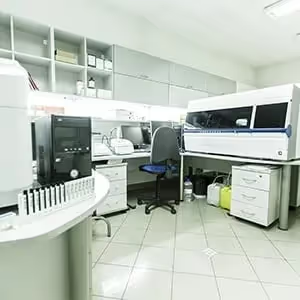
The intensifier pump was developed as a solution to a major homogenizer problem.
Homogenizers are now known to be effective due to the high pressure they can exert on a sample, yet this wasn’t always the case. In many cases, the input pressure of a system is low because the oft-used flexible tubing is not reinforced, which creates an upper limit on how much pressure can be applied. And although the output requires high pressure, without an intensifier, there is no way to safely increase pressure at this point. An intensifier pump provides a safe means with which to amplify a system’s pressure, despite low input pressure, and then transmit it to the output. Only through an understanding of homogenization and the role of intensifier pumps in the process can a user take full advantage of what they have to offer.
Homogenizers are a form of mixing equipment that contribute to numerous applications; in particular, they are well-known for their ability to decrease particle size. This application has hefty weight across industries, as small droplets and the emulsions created by them contribute to formation of homogenized milk, pharmaceutical medications (in both tablet and syrup form), biofuels, carbon nanotubes, and more. Intensifier pumps allow for further decreases in droplet size, as higher pressure equates to small droplet size.
Pion's BEE brand homogenizers incorporate proprietary intensifiers. The intensifier pump is comprised of three major sections, each of which contributes to a common goal. The hydraulic cylinder takes in pressurized oil and pushes a hydraulic piston, which causes the piston to push back. The hydraulic cylinder is held together with a high-pressure cylinder by an object called an isolator, which also prevents cross-contamination between hydraulic fluid and product fluid. And finally, the high-pressure cylinder takes in product from the inlet port and pushes it out to the EC during a power stroke of the pump.
The intensifier pump’s actions should not be minimized; it is because of this technology that allows the products indicated above to attain desired traits. For example, small droplet size contributes to product stability and, with foods and beverages, increased shelf life. With pharmaceutical products, this quality translates to increased bioavailability of active ingredients. And with any product, smoother texture and more uniform distribution of ingredients are to be expected.
Pion: The BEE Brand Homogenizer Advantage
On determining which homogenizer will be right for your lab, begin your search with Pion. We are globally recognized among laboratory managers and researchers for our high-quality products and excellent customer support. Particle size reduction is just one of a variety of applications for our homogenizers; nano/micro emulsions, cell lysis, lipids, suspensions, and dispersions are also easily achievable. Additionally, the homogenizer processes can be controlled to suit your product, which allows for customization to each cell type. And finally, the equipment is easy to use, produces higher yield in less time, and achieves results that are reproducible and scalable.

